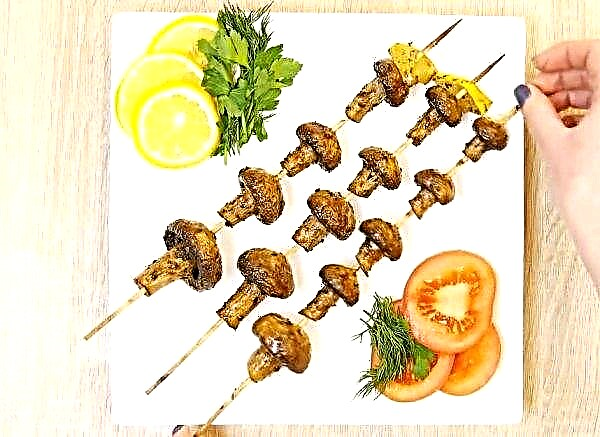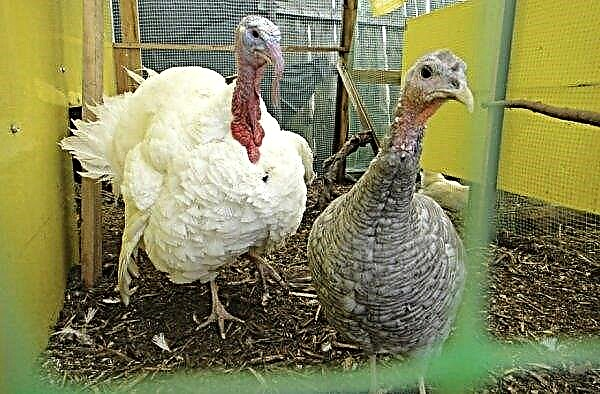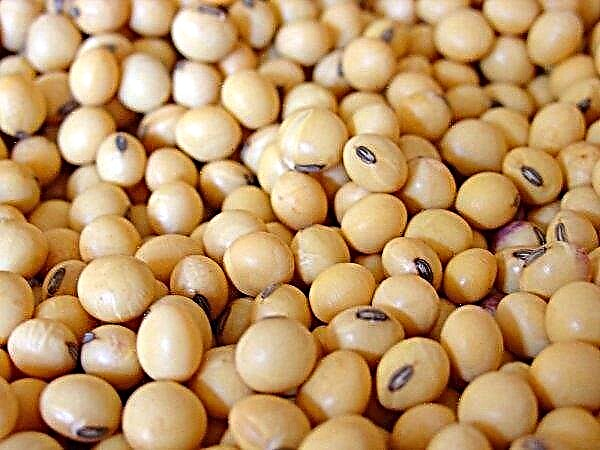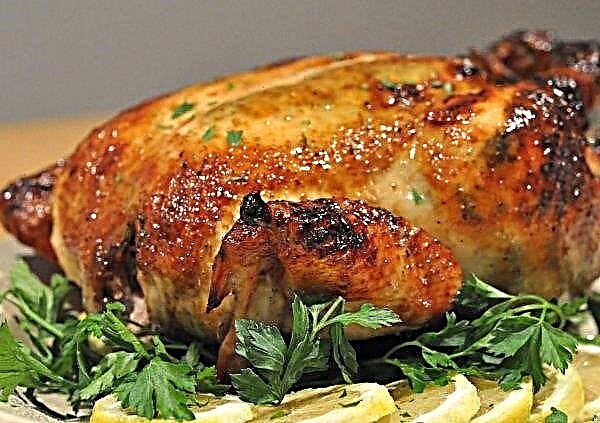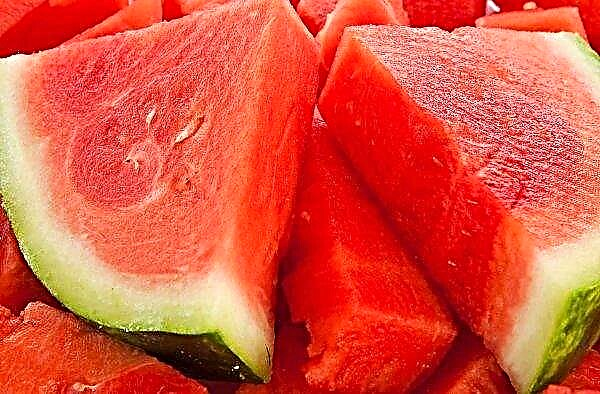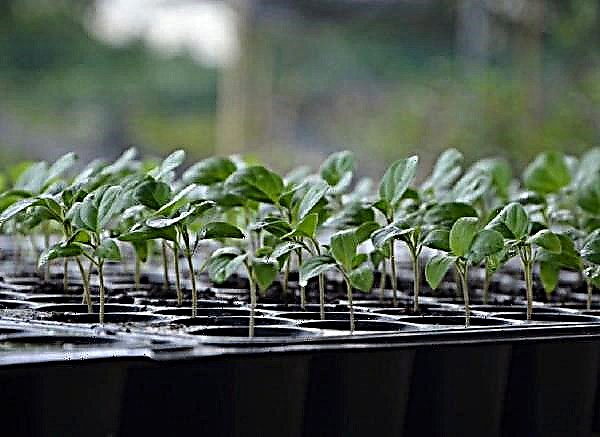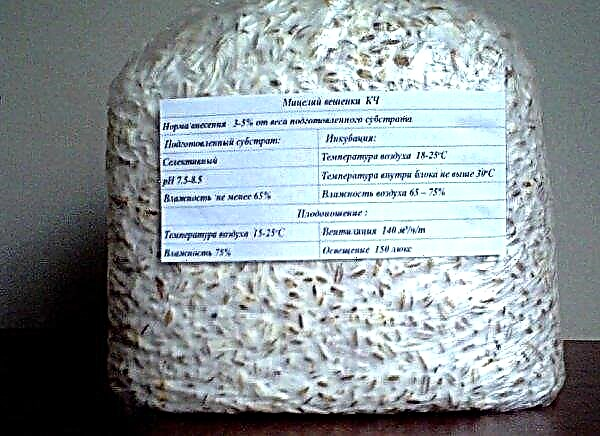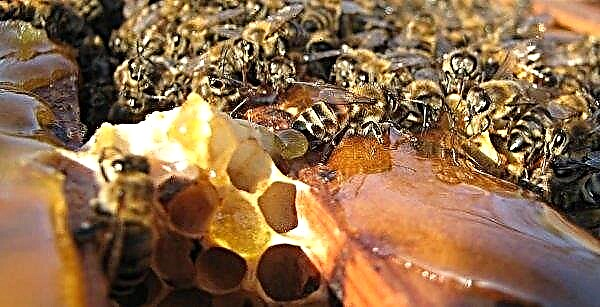The raspberry variety Mishutka is a new Altai variety, it is in great demand among gardeners, summer residents, although there is a huge number of fakes, so most lovers are careful to breed it because of the small amount of information. The variety has a lot of advantages, which this article will discuss.
Variety History
This raspberry variety was bred in the sixties of the last century by scientific breeders from the Gorno-Altai Institute. The cultivation of the variety was necessary for landscaping the Siberian and Altai regions. Professor V. M. Zeryukov is the author of a new kind of raspberry Mishutka.
Did you know? Professor Zeryukov liked to name the most successful raspberries in honor of his relatives. The teddy bear is named after his grandson.
The variety was bred by crossing two varieties of raspberries without spikes: Altai raspberries Shiny and large-fruited Stolichnaya. Thus a new species appeared without thorns with large berries. It is grown in difficult climatic conditions.
Description and characteristic
Berries have a round-spherical shape. The color - bright scarlet. The weight of one berry ranges from 3–7 g. Drupe is medium in size, interconnected, characterized in that it does not have the ability to crumble.
They have a pronounced raspberry flavor and aroma, in which sweetness and sourness are evenly present.
The bush grows to a height of 150-180 cm. It all depends on the climatic conditions of a particular area, such as soil, nutrition, humidity. The bush is flexible, easily bends under the weight of berries, without breaking off.Bark without wax coating. Upon contact with the bark, a certain velvetiness with a slight pubescence is felt, which protects the stems from drying out, protects from pests and diseases. Not cracking.
The buds are located quite close to each other, and this contributes to the formation of new branches, respectively guaranteeing increased productivity. Fruit branches are medium in thickness, length is 36 cm. The number of fruit-bearing shoots is from 16 or more pieces, grow moderately, which is enough for reproduction.
Advantages and disadvantages
- The advantages of the species include:
- the pulp is dense, so the berries do not wrinkle when removed and transported;
- the berries do not darken;
- great for freezing;
- the bush is resistant to frost;
- raspberries are resistant to various diseases, such as spotting, spider mites, mosaics, gray rot.
- The disadvantages include the following:
- the berry is small due to lack of moisture during flowering;
- Does not like ground water;
- every year it is necessary to feed the aged bushes;
- need to be processed during the budding period from the raspberry worm;
- does not tolerate shade.

Drought resistance, frost resistance
The species is winter-hardy, tolerates frosts well, does not dawn in the spring. However, it’s better to cover it for the winter. Easily tolerates spring winds. And also does not crack, does not dry out in the spring.
Productivity and fruiting
Raspberry bears fruit on two-year-old shoots. It belongs to the early varieties, but in some regions it bears fruit throughout the summer. It all depends on the number of sunny days in a particular area.
From the bush, up to four kilograms of raspberries are collected, and the application of fertilizers increases this figure to seven kilograms.
Landing Features
The variety is unpretentious and adapts to any soil. He does not like drying out, needs watering. It is recommended not to plant it on the southern slopes due to drying out of the soil. In this case, it is better to plant in the area where there is a small shadow.
Important! It is not recommended to land close to groundwater, in wetlands, in flooded areas.
When planting plants, observe the distance. The holes are dug at a distance of 60-70 cm from each other. Bushes are high, so you need to plant in one row. When it is planned to plant a plot, it is better to adhere to a width between rows of approximately 2 meters.
When planting the soil is fertilized:
- rotten bird droppings;
- compost;
- humus.
 Do not make peat, fresh manure, sawdust. All this will begin to rot and subsequently take away all the nitrogen from the growing bushes. After transplanting, the bushes are also abundantly watered and fertilize.
Do not make peat, fresh manure, sawdust. All this will begin to rot and subsequently take away all the nitrogen from the growing bushes. After transplanting, the bushes are also abundantly watered and fertilize.The timing
Raspberry bears fruit for several weeks, but it all depends on the climate of growth. It is not typical for berries on one bush to ripen at the same time. This makes it possible to enjoy the berry for a long period of time and in large quantities.
Choosing the right place
The following soil types are recommended for planting:
- Loam with soil acidity pH 5.9–6.4.
- Deoxidants are added to soil with high acidity one year before planting. Use limestone flour containing magnesium.
Important! Fertilizers with magnesium are especially beneficial for raspberries.
Selection and preparation of planting material
The choice of planting material must meet the requirements and indicators of the variety. It is worth paying attention to the possibility of infection with viruses that affect yield. Use green sprouts, which are prepared in early spring, as planting material. The height of the plant should be 11–16 cm. In this case, the sprouts should not have damage to the root system, be in the ground.
Use green sprouts, which are prepared in early spring, as planting material. The height of the plant should be 11–16 cm. In this case, the sprouts should not have damage to the root system, be in the ground.
Deepening in the soil occurs at the same depth as when digging. It is allowed to remove the lower leaves, but in this case, sufficient and careful care is necessary.
Woody sprouts are cooked in late autumn. Use annual seedlings. It is allowed to keep purchased planting material in special plastic bags if it is impossible to plant (temperature 1 ° C).
The plant can be dug in a shaded area, deepening by 1.5 cm. Planting requires abundant watering. Two-year-old seedlings are planted during the spring and autumn season.Rooted tops are harvested by cutting from the mother part of the bush 14–15 cm. They are buried in the soil by 7–9 cm in spring. Also, a new plant can be obtained by dividing the root system in the autumn period. Planted it in the spring to a depth of 6 cm.
Landing algorithm
Landing is done in dug trenches or a hole. Wells must be of the following sizes:
- the width of the hole is 40 cm;
- depth - 40 cm;
- length - 40 cm.
 Bushes are planted in one or two rows. Maintain an interval between rows of up to 2 meters and between bushes in a row of up to 70 cm.
Bushes are planted in one or two rows. Maintain an interval between rows of up to 2 meters and between bushes in a row of up to 70 cm.Care
Care requires the following conditions - annual pruning, tying the shoots. To increase productivity, the bushes are thinned out for better ventilation, removing old, diseased, dry shoots.
It is worth taking care of the introduction of organic fertilizers. Raspberry - a moisture-loving plant, therefore, it is worth watering regularly, but at least 3-4 times per fruiting season. In severe winters, it is recommended to cover the bushes.
Harvesting and storage
Raspberries of this variety ripen in early summer. Harvesting is advisable in the morning. At this time, the berry is not overheated by the sun. Do not harvest in rainy weather.
Overripe berries are removed from the bush, as they are a source of damage to various viral diseases that damage the plant. Collection is carried out in special containers with ventilation. Processing berries is carried out within 2-3 hours after collection. The optimum temperature for the collected berries is considered to be + 2 ° C. At this temperature, the berries persist for several days without losing their qualities. The berry should be aired. The humidity level for storage should correspond to 94–96%.
At this temperature, the berries persist for several days without losing their qualities. The berry should be aired. The humidity level for storage should correspond to 94–96%.
Winter preparations
The only thing that raspberries need in preparing for the winter period is quality pruning in October-November (before frosts). Organic fertilizers should not be applied in the fall, because raspberries have run out of sap flow.
It is allowed to bend the branches a little so that they are covered with snow, but not too close to the ground so as not to cause the shoots to be heated.
Breeding methods
Every year, the bush throws many shoots. The frail and weak are recommended to be removed.
Propagated in the following ways:
Diseases and Pests
Having no experience in the fight against diseases and pests, it will not be possible to collect a large and generous crop.
Raspberries can be affected by such pests:
- Raspberry stem gall midge - damages 69–72% of raspberries. Shoots are cut below the level of damage (about 3 cm) and burned. The procedures are carried out in spring and autumn. For prophylaxis, they are treated with Alatar and Intra-Vir chemical compounds during the period of departure and laying of eggs in an insect. Operations are carried out by spraying the shoots.
- Raspberry shoot aphid present in all regions of raspberry growth. Especially often appears in shaded areas. Aphids cause curl of leaves, drying flower stalks. Winters on annual shoots near the buds. Processing is carried out with the preparations Fufanon, Actellik, Alatar before flowering and after flowering.
- Raspberry and strawberry weevil damages young leaves, lays eggs inside the buds. Cut the stalks by gnawing buds. Use the preparations "Alatar", "Intra-Vir" 5-6 days before flowering or after harvest.
- Powdery mildew damages plants during high humidity in early summer (June, July).
- Leaf curl provokes twisting of leaves, which entails shortening of shoots.





For prevention should:
- protect the roots from damage, i.e. gently loosen;
- transplant raspberries to another place after 6 years;
- plant healthy bushes on fertilized soil;
- trim with special disinfected scissors.
From diseases and for prophylaxis, treat with “Abiga-Peak”, “Khom” preparations, copper oxychloride. Mishutka is a raspberry variety that deserves the attention of gardeners. Adhering to the strict recommendations for cultivation, you can easily plant and care for this shrub in your area.

